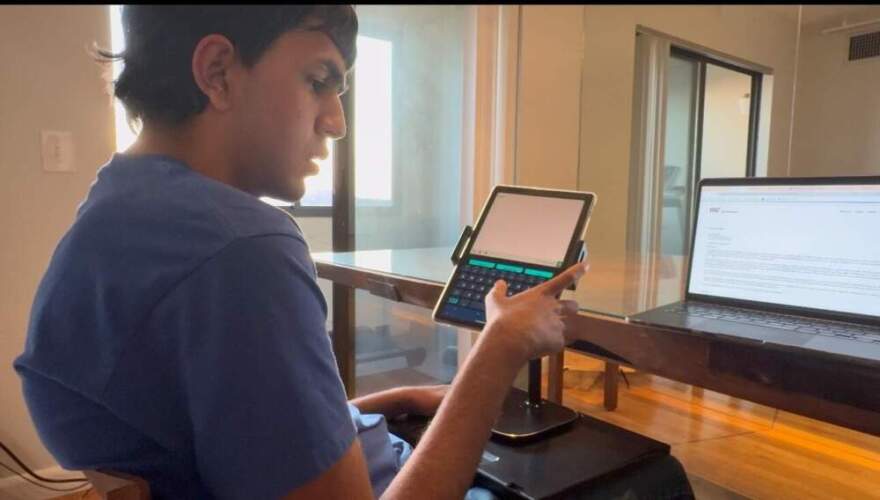
When Viraj Dhanda begins his freshman year at the Massachusetts Institute of Technology, he’ll be the university’s first-ever non-speaking student with autism.
Diagnosed with autism at age 2, Viraj Dhanda was mistakenly thought to be intellectually disabled for the first 14 years of his life, his father, Sumit Dhanda, said. Viraj Dhanda also has apraxia, a neurological condition that limits muscle movements and motor skills. The condition is not uncommon among people on the autism spectrum. Viraj Dhanda communicates using text-to-speech assistive technology, typing on his tablet with one thumb.
“I hated being labeled mentally disabled. People thought I was behavioral because I flopped on the floor, used my body to communicate, but what was I supposed to do?” Viraj Dhanda said. “I couldn’t sign or speak, and I was desperate for the world to know that I had a fully functional brain.”
After his initial autism diagnosis, Viraj Dhanda received some therapies and interventions, but they were all based on the notion that he had an intellectual disability. Then, when he was 10, his babysitter suggested he use an augmentative and alternative communication device, a box with buttons labeled ‘yes’ and ‘no.’

Viraj Dhanda started using the communication device to request his favorite TV shows, then a breakthrough came right before his 13th birthday when he was watching a show called “Super Why!,” where animated characters spell out words. In this episode, the word was ‘waterfall.’
“Before it gets spelled on the screen by the superhero, he says the letters that he can — A-T-E-R — and then a light bulb goes on in me,” Sumit Dhanda said. “Oh my God. We had this entirely misdiagnosed.”
Viraj Dhanda remembers that moment too. He said he was trying to send a message to his father.
Sumit Dhanda said that from there, Viraj Dhanda was reassessed and correctly diagnosed as having non-speaking autism with above-average intellectual capabilities. His father explained that the apraxia leaves him unable to speak.
“Speech and language are two different centers of the brain. So, you can have language without having speech because speech is a motor function,” Sumit Dhanda said, “and this is where I think the therapist community at large often fails these children.”
Viraj Dhanda started using a large letter board, pointing to individual letters to spell out his thoughts. With the help of his father, he then started working on smaller and smaller devices until he found success on a tablet that could verbalize his thoughts.
Dhanda said he doesn’t think that Viraj’s situation is unique, and that other non-speaking autistic children could also be more capable than people realize.
“There’s something there. It could be the mind, but the limitation is often the body,” Sumit Dhanda said. “You’ve got to presume that your child has the ability to think.”
By the time Viraj Dhanda was reevaluated, he was ready for college-level math courses and enrolled at Fusion Academy in Newton, Massachusetts, where he flourished with personalized lesson plans and one-on-one instruction.
“ It felt liberating,” Viraj Dhanda said. “The simple dignity of being able to speak was enough for me.”
Viraj Dhanda then decided to apply to MIT, even though “Dad said I had no shot,” he joked. He’s planning to take a gap year, but looks forward to meeting his fellow classmates on campus.
“I would love to have others reach out. I am just as normal as you, except I can’t speak,” Viraj Dhanda said. “If you are patient, we can hang together.”
____
Karyn Miller-Medzon produced and edited this interview for broadcast with Todd Mundt. Grace Griffin produced it for the web.
This article was originally published on WBUR.org.
Copyright 2025 WBUR

